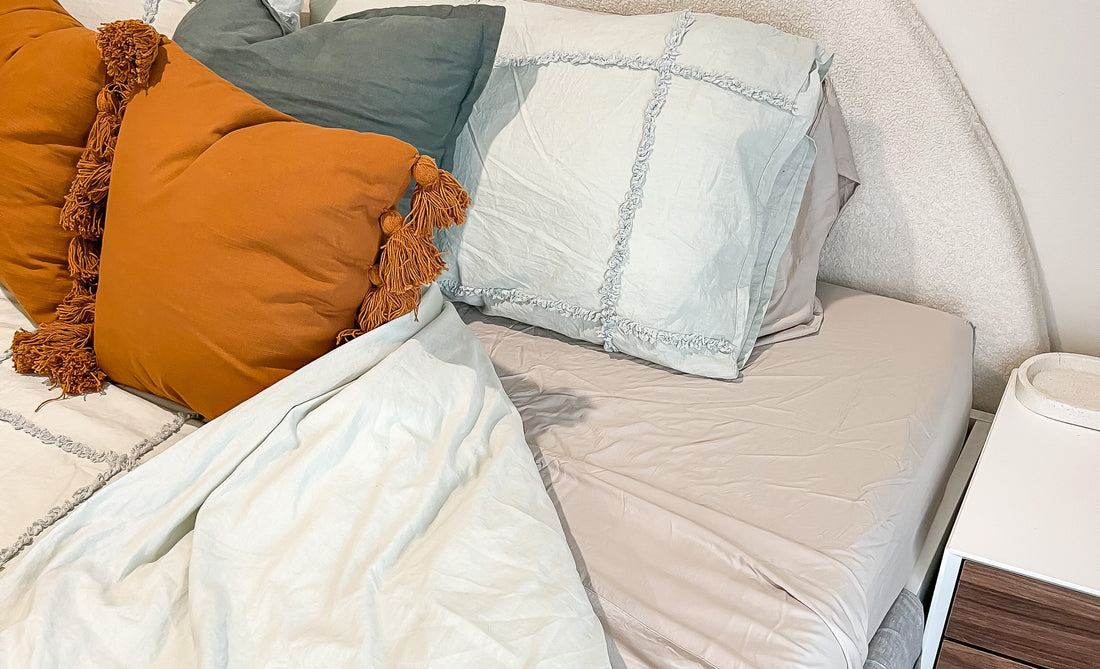In today's digital age, we are surrounded by screens emitting blue light from our smartphones, tablets, computers, and even energy-efficient LED lights. While blue light has its benefits during the day, it can have a significant impact on our sleep patterns when exposed to it at night.
In this blog post, we will explore the effects of blue light on sleep and discuss strategies to minimise its impact.
Understanding Blue Light
In order to fully comprehend the impact of blue light on our sleep, it is essential to have a clear understanding of what blue light is and how it affects our bodies. Blue light is a type of visible light that has a short wavelength and high energy. It is naturally emitted by the sun and is responsible for giving the sky its blue color during the day.
During daylight hours, exposure to blue light is beneficial as it helps to regulate our circadian rhythm, or the body's internal clock. It stimulates the brain, promotes alertness, and boosts our mood and cognitive performance. In fact, exposure to natural blue light during the day is crucial for maintaining a healthy sleep-wake cycle.
However, the problem arises when we are exposed to excessive amounts of blue light, particularly in the evening and at night. Our modern lifestyles often involve prolonged screen time on electronic devices such as smartphones, tablets, and computers, all of which emit blue light. Additionally, energy-efficient LED lights, which are commonly used in our homes and workplaces, also produce significant amounts of blue light.
How to Minimise the Effects of Blue Light on Sleep
Now that we understand the impact of blue light on our sleep, it's time to delve into practical strategies to minimise its effects.
By incorporating these techniques into our daily routines, we can create a sleep-friendly environment and promote healthier sleep patterns.
Establish a Digital Curfew
It's important to set a digital curfew at least one hour before bedtime. This means disconnecting from electronic devices such as smartphones, tablets, and computers. Instead, engage in relaxing activities such as reading a book, practicing mindfulness exercises, or having a calming conversation with loved ones. By reducing screen time before bed, we can allow our bodies to naturally wind down and prepare for sleep.
Adjust Display Settings
Most electronic devices offer settings to reduce the amount of blue light emitted. Take advantage of features such as "Night Shift" (iOS) or "Night Mode" (Android) on smartphones and tablets, which automatically adjust the screen's color temperature to a warmer, less blue hue. Similarly, adjust the blue light emission on your computer or laptop display settings. By making these adjustments, we can minimise the amount of blue light we are exposed to during evening hours.
Use Blue Light Filter Applications or Screen Protectors
To further reduce blue light exposure, consider installing blue light filter applications on your devices. These applications work by adjusting the color temperature of the screen to emit less blue light. Alternatively, you can opt for blue light-filtering screen protectors, which physically block a portion of blue light. These solutions can be especially beneficial for individuals who have no choice but to use screens close to bedtime.
Opt for Warm Lighting
Replace bright, cool-white LED lights in your bedroom with warm-colored bulbs or lamps. We suggest using bulbs with a lower color temperature, as they emit a softer, warmer light that mimics the natural hues of sunset. This creates a soothing environment and signals to your body that it's time to wind down and prepare for sleep.
Wear Blue Light-Blocking Glasses
Blue light-blocking glasses have gained popularity as an effective way to minimise the impact of blue light on sleep. These glasses feature lenses that filter out a significant portion of the blue light spectrum. Wearing them in the evening when exposed to screens or bright indoor lighting can help regulate melatonin production and promote better sleep. It's worth noting that these glasses are available in various styles, making them both functional and fashionable.
Create a Sleep-Friendly Environment
We have to emphasize the importance of creating a sleep-friendly environment in your bedroom. Ensure your room is dark, quiet, and cool. Use blackout curtains or blinds to block out external light, invest in earplugs or a white noise machine to minimise noise disturbances, and set the thermostat to a comfortable temperature. By optimizing your sleep environment, you can create the ideal conditions for restful sleep.



